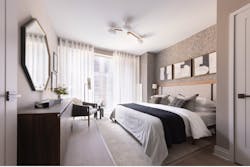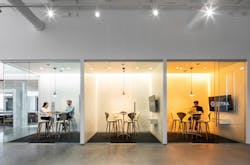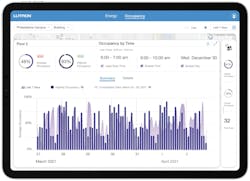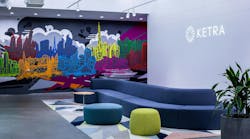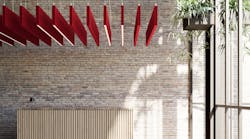With the advances in LED technology, modern commercial lighting control systems deliver code compliance and energy efficiency by default. Now, owners and end-users are focusing on ways to further elevate the occupant experience and improve building performance.
For lighting control systems, opportunities lie in advanced technologies, including tunable white, integrated shading solutions, connected control systems, and software dashboards that provide actionable intelligence that can help improve the building environment.
To ensure the best experience, it is important to think about the lighting control system early in the project process. This helps ensure there is time to conduct the upfront research necessary to identify providers and control solutions. The following design tips can help take lighting control systems to the next level regardless of project size or type.
Design for freedom and scalability
Over the last few years, a premium value has been placed on the ability to pivot. Smart wireless lighting systems excel here because they can accommodate change regardless of project size or scope — without requiring rewiring and with minimal or no added material cost. Choosing a system that works with many fixture types — for instance, static white, tunable white and full-color control, all under a single platform — makes it easier to optimize key spaces without compromising the budget in areas where static white control is sufficient.
Adding individual fixture control, or luminaire-level lighting controls (LLLCs), can further extend the power of LEDs by integrating the benefits of connected control systems directly into each fixture. LLLC-equipped fixtures can be controlled individually or digitally grouped into lighting zones that meet the specified design vision and specific customer needs.
Incorporating LLLCs in the lighting design allows designers and facility managers to evaluate data and revise lighting strategies over time without having to rewire or replace hardware or create complex wiring schematics. Tenants change. Spaces get updated. Occupants have different personal requirements. Adaptable lighting can meet today’s needs and readily adapt to future changes.
Use available daylight in ways that minimize heat gain and glare
In corporate, hospitality and healthcare environments, natural daylight is a coveted amenity. Integrating automated shading solutions that preserve view and increase comfort while reducing heat gain and glare helps make the most of natural lighting.
For example, automated shades can open to let in the morning sun while electric lighting augments daylight as needed. As the sun shifts throughout the day, lights turn on or brighten, and shades adjust to maintain a comfortable environment. At night, shades may close against the cold or open to a beautiful exterior or to highlight the cityscape for an after-hours event. In this way, daylight integration introduces both practical and emotional benefits to smart-building design.
Choose a smart and user-friendly lighting control system
Analytical software and intuitive dashboards can help users visualize and analyze complex information into useful reports. Information such as occupancy patterns, energy data and user interaction can support business goals and operations, inform better space planning, and may even aid in employee recruitment and retention.
Apps give designers, architects and facility teams the ability to make changes conveniently and, if necessary, remotely. Incorporating diversity in control options — at the wall, from sensors and remotes, or via apps on a smartphone — facilitates usability and enhances the creative expression of light. Such a combination of controls can add value for both the building owner and occupants.
Integrate cloud-connected solutions
While cloud-connected technology is effecting a fundamental change in lighting control, IoT-connected systems are already part of our everyday lives. Software platforms such as Apple’s iOS are prime examples of technology that becomes more capable over time. The hardware is assumed to be the front end, and the customer counts on software and firmware updates to enhance its lifespan and value.
Expect smart lighting systems to accommodate change right from app-delivered software, and to take advantage of the latest tech with capabilities that are just a cloud update away. With a modern lighting system and controls, the space can become dynamic and experiential yet still provide data and insights to drive operational and functional improvements.
Seek ongoing service and support
System challenges can occur even in the best-planned projects. Lighting malfunctions, programming glitches and other unforeseen issues can affect employee comfort, building operations, productivity and tenant satisfaction.
Connected control helps you prioritize innovative solutions in combination with manufacturer support and technical expertise. The system manufacturer should offer global service and respond quickly — remotely or in person — to solve problems and provide solutions.
When a lighting control system is designed with these components in mind, it becomes a building asset, adding value and increasing capability over time.

